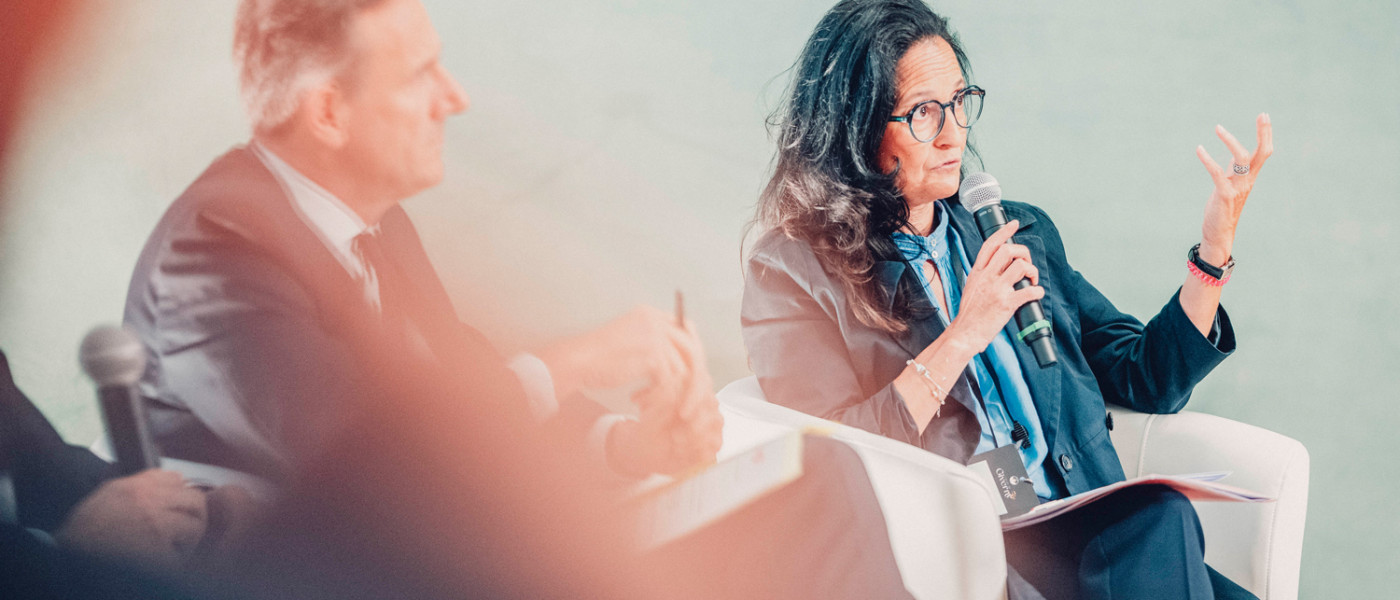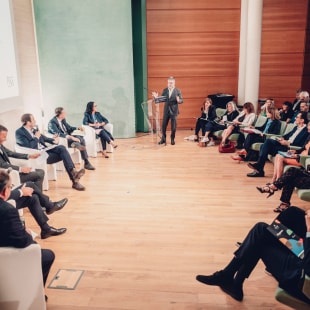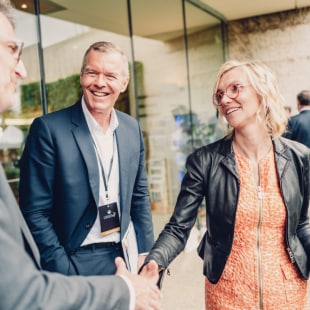The Low-Carbon Transition Group, specialists in the transition to low-carbon
“The Low-Carbon Transition Group was created in October 2021, with the mandate to support the Bank's customers in their transition to low-carbon business models,” explains Séverine Mateo, Head of the LCTG. After two years, and through fully applying this starting principle, this global ecosystem of 200 specialists continues to grow, while supporting more and more customers. "I don't think we can have just one profile for the clientele of the Low Carbon Transition Group,” Romain Talagrand, Head of Renewable Energy Finance within the LCTG explains with a smile. Talagrand had always wanted to work in clean energy, adding: “This is precisely what is so interesting with the energy transition, it has universal appeal.”
As Mateo explains, “In concrete terms, we work alongside energy and industrial companies who have to pivot their business model towards a low carbon one. We also work with innovative companies that we help to grow, for example by advising them on raising capital, equity and debt to develop their low carbon activities. We can also help the Bank's institutional clients by advising them and financing the development of their low-carbon businesses. Ideally, we also seek to identify the next ‘green unicorn’! So, at the heart of our advisory business, there is also the monitoring of trends and the ability to connect several clients in order to help them achieve their decarbonisation objectives.”
Find out about the job offers within the LCTG
BNP Paribas mobilises all its expertise to support its clients’ energy transition
This principle of cooperation and the complementarity of expertise applies to the way the LCTG teams work, whether in America, Asia or Europe: “To best support our clients and meet all their needs, we adopt a global approach, which mobilises all the Group's resources. The LCTG is part of CIB, but we do not hesitate to turn to another entity if we believe that our client needs their expertise,” explains Mateo. “The sharing of expertise offered through the Group's subsidiaries are essential to the dynamics of the transition,” she adds.
Since the launch of the LCTG, BNP Paribas has further supported the climate strategy accelerator. After first structuring announcements on energy financing in January 2023, the Group published its new climate report in May. The report presents its new emission reduction targets for the steel, cement and aluminium sectors and reviews its progress in the oil and gas, automotive and electricity production sectors.
“What we are trying to do is to see where emissions come from in the economy, and to take action directly at the source,” explains Séverine Mateo. “In concrete terms, if we succeed in decarbonizing electricity production, all industrial processes and transport, this will represent about 75% of greenhouse gas emissions.” To achieve this, her teams focus on technologies that decarbonise the economy, such as green hydrogen, low carbon fuels, batteries, renewable or low-carbon electricity production and carbon capture, which creates opportunity for industries for which the decarbonisation solutions are not mature enough. Specialised teams have thus been created within the LCTG to support the Group's customers pivot and closely monitor developments of decarbonisation technologies in their sector. “Timing is key in the deployment of new decarbonisation technologies that would require alignments of all stakeholders and implementation of appropriate regulations,” notes Mateo.
Green power, a necessity for decarbonisation
“It is also an industrial policy issue,” says Talagrand, “because not all decarbonised energies can necessarily be developed in parallel within the same territory. He takes the example of biomass, which tends to decrease in production proportionally to the effects of climate change in a country: “Our forests suffer because of heat and drought – and one of the consequences is a reduction in the amount of biomass. It will therefore be necessary to make trade-offs: is its role as a natural carbon sink favoured? Do we want to use it in agriculture? Using it as a priority to produce energy? Each country will have to make its own choices.” Beyond this example, Talagrand emphasises the synergy between nuclear and renewable energies: “We tend to contrast them, but even as wind and solar are being rapidly deployed, nuclear is a long-term energy. The priority in these next few years is to produce as much green energy as we need to ensure decarbonisation—without that, we can’t recharge our electric cars, power heat pumps to replace gas or oil heating, we’d have no green hydrogen production to replace fossil fuels… To achieve our decarbonisation targets, we will need all the low-carbon technologies.”
This belief has fueled discussions with other participants in the renewable energy deployment working group launched by the Cercle de Giverny, an organisation with the goal of presenting public authorities with concrete proposals in matters of CSR. “As a banker, it was exciting to be confronted with different points of view. Our working group brought together professionals from the industry, financiers of all kinds, teachers and strategy consultants, as well as experts in biodiversity... It gave us a very broad vision and opportunity for back-and-forth reflection: If we propose a certain solution, what could its implementation impact? What are the impacts of solar and wind on the use of a territory by the people who live there? We tried to provide answers to all the stumbling blocks and to identify all the acceleration levers, along with clear operational mechanisms.”
Two exemplary projects
- The Fécamp wind farm in France, which the Group has advised and financed, will be fully operational during the winter of 2023-2024. Its 71 wind turbines are expected to cover the equivalent of the electricity consumption of more than 770,000 people.
- In Sweden, BNP Paribas advised and financed Northvolt to set up financing for Europe's first automotive battery production plant, which is entirely powered by renewable energy.





